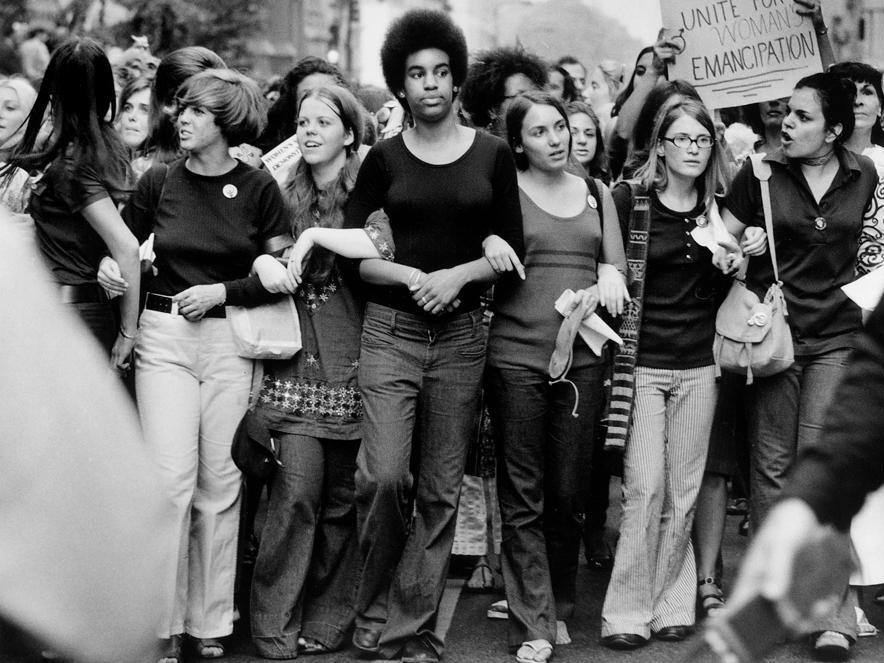Physical Address
304 North Cardinal St.
Dorchester Center, MA 02124
Physical Address
304 North Cardinal St.
Dorchester Center, MA 02124

The history of second-wave feminism, a significant yet problematic movement, is still being unraveled today. Popular renditions such as the show Mrs. America and critiques from public intellectuals like Tressie McMillan Cottom and Roxane Gay contribute to this ongoing understanding. Clara Bingham’s book, The Movement, seeks to narrate the early years of the second wave through first-person accounts of women who were directly involved in the struggle.
While notable figures like Gloria Steinem, Shirley Chisholm, and Betty Friedan feature prominently, The Movement also brings to light the experiences of lesser-known participants who played pivotal roles in advancing the cause. A major aspect of the book is the issue of abortion, central to women’s liberation during this period and still highly relevant today.
Billie Jean King, in an interview with Bingham, describes the dehumanizing process of securing a legal abortion before Roe v. Wade. King recounts pleading her case before a medical committee in California, calling it one of the most degrading experiences of her life. She also highlights the indignity of needing her husband’s authorization for the procedure, a reality that many women today may soon face again.
Bingham was shocked to find that nearly all of the 100-plus women she interviewed had undergone illegal abortions during this time. “Virtually everyone I spoke to had a terrifying illegal abortion,” she said, recalling the vivid and painful details women shared with her. This high frequency of illegal abortions was partly due to the limited availability of contraceptive pills, which were not accessible to single women until 1972. Many women wore fake wedding rings to appointments to obtain them.
These early contraceptives had high hormone levels and severe side effects, making the women feel like guinea pigs. Bingham also details how feminist publication Ms. Magazine published a list of 53 women who admitted to having had abortions, an act that caused significant backlash, including against Billie Jean King. Although King’s inclusion was non-consensual, the social stigma she faced was immense.
In her research, Bingham encountered a personal revelation: her mother’s name appeared on this historic list. Her mother had confessed her abortion to Bingham a year before she passed away, leaving the journalist to reflect on what could have been. This discovery made Bingham’s work on The Movement even more poignant, serving as a vivid reminder of what is at stake today.
Apart from reproductive rights, the book covers other valuable parts of the second wave, including Shirley Chisholm’s 1972 presidential run. As Kamala Harris prepares for her own historic campaign, Chisholm’s pioneering efforts and enduring influence are especially relevant. Representative Barbara Lee recalls Chisholm as an extraordinary candidate, fluent in Spanish, an advocate for immigrant rights, and a staunch supporter of reproductive freedom.
Chisholm, the first Black woman elected to Congress, faced severe misogyny and racism, enduring demeaning behaviors from her colleagues. Her inclusion in The Movement addresses common critiques that the second wave focused excessively on the concerns of privileged white women by highlighting voices of Black feminists who were instrumental in the movement.
However, the book falls short in other areas. While Bingham includes women who identified as lesbians during the second wave, she does not address transgender women. This omission is notable as it reflects ongoing tensions within feminism regarding transgender inclusion. The involvement of figures like trans woman Sandy Stone, heavily engaged in the feminist movement of the 70s, is notably absent.
Interestingly, Bingham revealed that The Movement gained traction in the wake of the #MeToo movement and the fall of Harvey Weinstein, underscoring how current events can revive interest in historical feminist struggles. This demonstrates how feminism’s waves are interconnected and how books like The Movement are essential for understanding the continuing relevance of past battles.
By revisiting the history of the second wave, books like The Movement help combat historical amnesia and provide a more nuanced understanding of feminism’s past and present. As Bingham poignantly observed, “the original tradwife was Phyllis Schlafly,” highlighting the recurring need to challenge regressive gender roles. The Movement remains a crucial and impressive achievement in documenting the complex history of second-wave feminism.
Source: The Guardian



